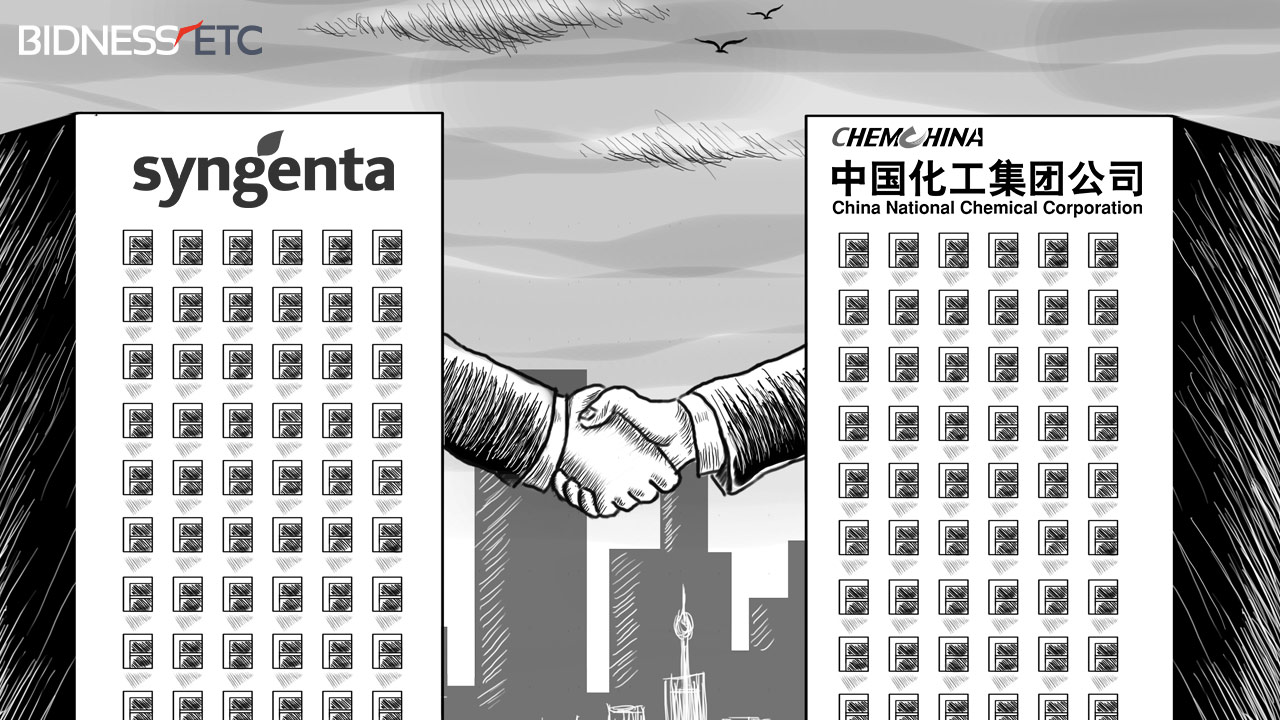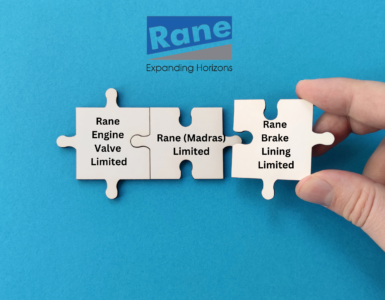In an effort to secure food for its large and growing population apart from getting access to cutting edge technology and global markets, China-based ChemChina (China National Chemical Corporation), which has business interest in material science, life science and basic chemicals, has acquired Swiss-based crop protection and seeds company Syngenta for $43 billion. The transaction is expected to be completed by the end of the year, subject to various regulatory approvals. The management of both the countries first met in Germany nearly a year ago and the final talks gathered momentum in December last year.
The Deal Matrix
The deal makes strategic sense for both Syngenta and ChemChina, which is a state-backed company. For the former, it will enable the company to expand operations in emerging markets like China. For the latter, it will get access to latest crop protection technologies with world class resources and capabilities that will enable it to access valuable knowledge which will help its drive for innovation in the future. The deal will also transform ChemChina into the world’s biggest supplier of pesticides and agrochemicals. By acquiring Syngenta, the Chinese government in a way gets access to one of the four dominant producers of genetically modified (GM) crops, with over 7,000 seed varieties. Syngenta also has a pipeline of fungicides, herbicides, and crop protection tools. China knows all too well that providing a food supply for 1.5 billion people can happen only using technology. Beijing is keen to boost farming productivity as it seeks to cut food imports and the deal fits into Beijing’s plans to modernize agriculture over the next five years, as in the past Chinese have relied mainly on traditional ways of farming.
“With ChemChina acquiring Syngenta for $43-billion, there is a clear indication that Chinese companies are set to play an important role in global deal making, as they seek other drivers of growth”
Several years of intensive farming coupled with random overuse of pesticides has degraded agricultural land in the country. Beijing is keen to boost farming productivity as it seeks to cut food imports. China’s problem is that while it accounts for 10% of the world’s arable land it has, on the flip side to feed 20% of the world’s population. The acquisition is also a clear indication that China is now willing to invest in GM crops for the future.
ChemChina has paid 470 SW Francs a share ( $465 a share plus a special dividend of 5 Swiss francs) to buy the Syngenta, which is 24% higher than the company’s last close of 378.4 francs, the day before the deal was finalized. Initial reactions of investors of Syngenta were positive as the company’s stock rose 6% on the day of the announcement. ChemChina has lined up bridge financing of about $25 billion for the offer from banks and it will delist Syngenta’s shares after the deal. The company will keep the management team of Syngenta in place and the company will remain based in Switzerland while the existing management team will continue to run the company.
Syngenta is the top pesticide seller in North America in terms of revenue and this largest ever foreign purchase by a Chinese company will accelerate a shake-up in global agrochemicals industry and surely marks a big setback for Monsanto, which was eying to buy Syngenta. In fact, Syngenta is already the largest supplier of crop chemicals, excluding seeds, in China with a 6% share of a fragmented market.
Pressure on Monsanto
The deal is really a setback for St Louis, Missouri-based Monsanto that had set its sights on Syngenta in August last year. Pressure is fast building up on Monsanto, which is a market leader in genetically modified seeds as its market share is dwindling by the creation of Dow-DuPont. In fact, the global seeds and pesticides sector is facing a lot of consolidation after the biggest merger of Dow-DuPont, as Dow Chemical and DuPont, the two largest US chemicals companies, have agreed to a $130 billion merger of equals in an all-stock deal. The deal is the largest in the chemicals industry. After the merger, the combined entity will break-up into three separate businesses – agriculture, material science and specialty products – through tax-free spin-offs. The logic behind the merger and the spin-off into three companies are to achieve a leadership position in each product segment.
A global glut in corn and soybeans has depressed grain prices for the past three years, prompting many farmers in the US to reduce spending on seeds, chemicals, and pesticides. The cutbacks, along with pressure from many investors of seed and pesticides companies to increase profits have sent many of such companies to look for deals with reasonable valuations.
Chinese companies aggressively snapping up companies abroad
The latest spate of acquisitions by Chinese companies of assets abroad is a clear indication that they are looking much more than their domestic market for growth. With the fall in commodity prices and slowing down of a global economy, Chinese companies are getting foreign assets at a bargain and are determined to secure quality strategic assets. Syngenta, for instance, has been going through challenging times recently broadly because of its exposure to uncertain markets where the economy has slowed down significantly and the collapse in global commodity prices.
In the first two months of this year, four of the five cross-border deals have involved Chinese groups snapping up the US and European assets worth over $61 billion. Last year, Chinese companies did acquisitions worth $656 billion, which was a record in itself. Looking at the trend of acquisitions by Chinese companies in the past one year, it is very clear that they particularly got interested in snapping up companies in the technology, industrial and entertainment space. Most of the deals done now form part of a longer-term strategy and have been planned much before the renminbi’s recent depreciation. The ChemChina and Syngenta deal is a clear signal that despite sharp drops in global equity markets driven by concerns over economic growth, particularly in China, companies are still looking for expansion through acquisitions.
About Syngenta
Headquartered in Switzerland, Syngenta is a leading agriculture company helping to improve global food security by enabling millions of farmers to make better use of available resources. Through world-class science and innovative crop solutions, the 28000 strong workforces of the company present in over 90 countries work to transform how crops are grown. In 2015, it’s earnings before interest, tax, depreciation and amortization (EBITDA) fell 5% to $2.7 billion, down from $2.93 billion in the previous year. The company’s sales totaled $13.4 billion, down 11% in actual exchange rates due to US dollar strength from 2014. In constant terms, however, sales were up 1% in 2015.
About ChemChina
Headquartered in Beijing, ChemChina possesses production, R&D and marketing systems in over 150 countries and regions. It is the largest chemical corporation in China with assets worth 300 billion yuan as of September last year and finds a place in 265th position among Fortune 500 companies. The company’s main businesses include materials science, life science, high-end manufacturing and basic chemicals. In the past, the company has successfully acquired nine leading industrial companies in France, United Kingdom, Israel, Italy, and Germany. The company has a very good track record of successful post-acquisition integration. After acquiring companies in the past, it has been investing in them and developing them to achieve full growth potential.
Lessons for India
The way the Chinese government helped ChemChina to acquire Syngenta clearly shows how serious the Middle Kingdom is in building the path for future food supply. There is definitely a lesson for the Indian government from this deal. Instead of promoting GM crops, the government has recently sought price control on genetically-modified Bt-cotton seeds. Moreover, no new GM crop has been approved for cultivation after BT cotton in 2002. In fact, BT cotton has been a major success in raising productivity and yield. As per data from an OECD report, South Korea and Israel have been investing more in R&D as a share of GDP than other developed countries. While Korea spent 4.29% of its GDP on R&D, Israel (4.11%) and Japan (3.58%) followed suit. While China (2.05%) has passed the 2% goal it had set and is ahead of the EU (1.94%), India trails at 0.89%. So, ChemChina- Syngenta deal is a learning experience for Indian companies and they should start thinking of similar acquisitions, may be in small scale, as India, too, has to feed 1.2 billion people and more land is required for industrial and housing purposes.




